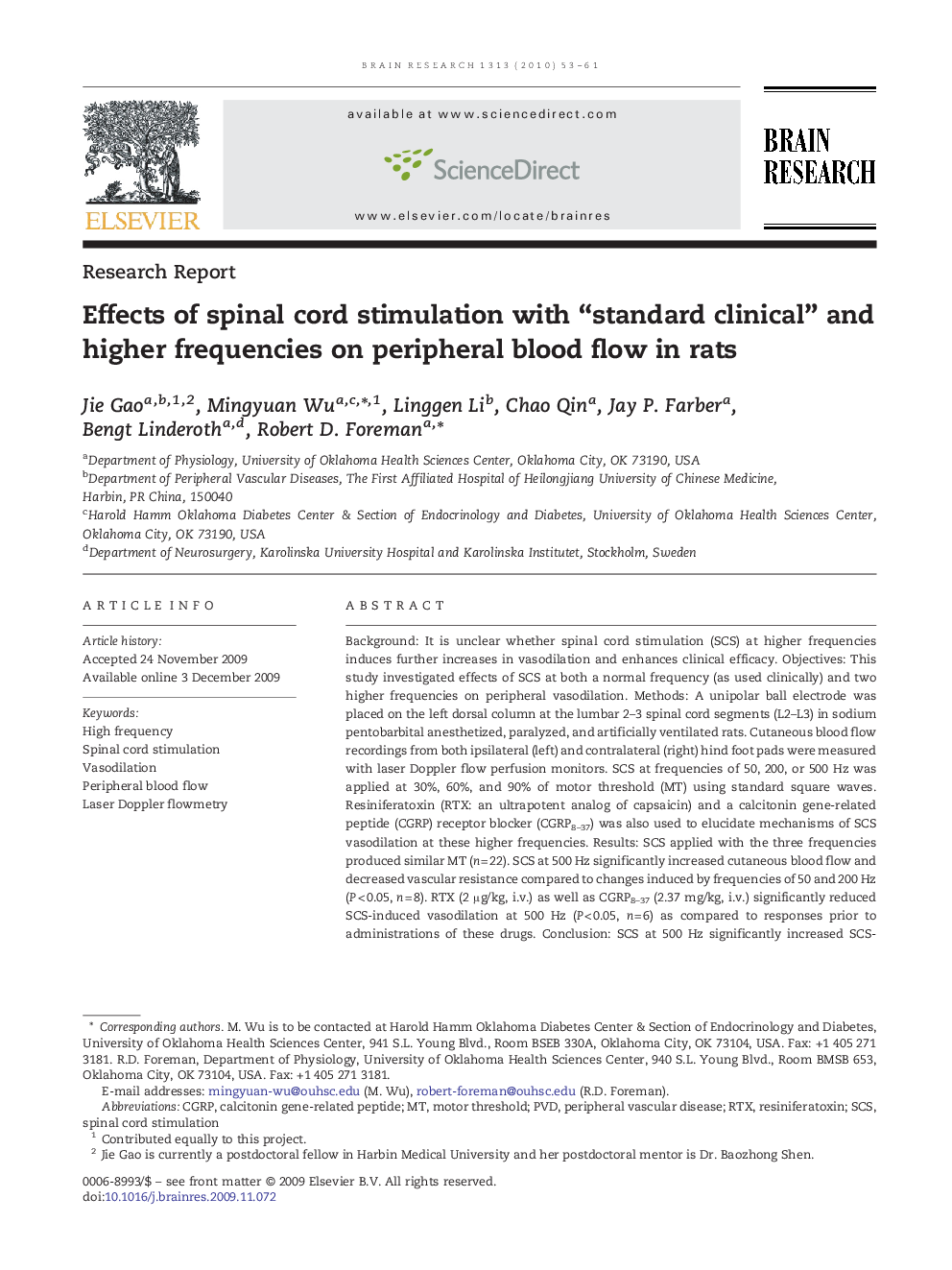| Article ID | Journal | Published Year | Pages | File Type |
|---|---|---|---|---|
| 4327297 | Brain Research | 2010 | 9 Pages |
Background: It is unclear whether spinal cord stimulation (SCS) at higher frequencies induces further increases in vasodilation and enhances clinical efficacy. Objectives: This study investigated effects of SCS at both a normal frequency (as used clinically) and two higher frequencies on peripheral vasodilation. Methods: A unipolar ball electrode was placed on the left dorsal column at the lumbar 2–3 spinal cord segments (L2–L3) in sodium pentobarbital anesthetized, paralyzed, and artificially ventilated rats. Cutaneous blood flow recordings from both ipsilateral (left) and contralateral (right) hind foot pads were measured with laser Doppler flow perfusion monitors. SCS at frequencies of 50, 200, or 500 Hz was applied at 30%, 60%, and 90% of motor threshold (MT) using standard square waves. Resiniferatoxin (RTX: an ultrapotent analog of capsaicin) and a calcitonin gene-related peptide (CGRP) receptor blocker (CGRP8–37) was also used to elucidate mechanisms of SCS vasodilation at these higher frequencies. Results: SCS applied with the three frequencies produced similar MT (n = 22). SCS at 500 Hz significantly increased cutaneous blood flow and decreased vascular resistance compared to changes induced by frequencies of 50 and 200 Hz (P < 0.05, n = 8). RTX (2 μg/kg, i.v.) as well as CGRP8–37 (2.37 mg/kg, i.v.) significantly reduced SCS-induced vasodilation at 500 Hz (P < 0.05, n = 6) as compared to responses prior to administrations of these drugs. Conclusion: SCS at 500 Hz significantly increased SCS-induced vasodilation without influencing MT. Furthermore, effects of SCS at 500 Hz are mediated via activation of TRPV1-containing fibers and a release of CGRP.
